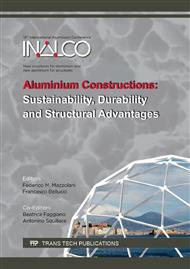p.3
p.13
p.22
p.35
p.41
p.47
p.53
p.59
Use of Aluminium Structures in the Offshore Industry
Abstract:
The paper deals with the applications of aluminium alloys in the main structures used in the Offshore Industry. The reasons why aluminium and its alloys are the suitable materials for this kind of applications are clearly identified. After mentioning the appropriate standards and design rules, some important examples, like helicopter decks, gangways and living quarters, are illustrated in details. An overview on the typical connecting systems of aluminium alloys commonly used for the offshore technology is presented.
Info:
Periodical:
Pages:
22-31
Citation:
Online since:
September 2016
Authors:
Keywords:
Price:
Сopyright:
© 2016 Trans Tech Publications Ltd. All Rights Reserved
Share:
Citation:


